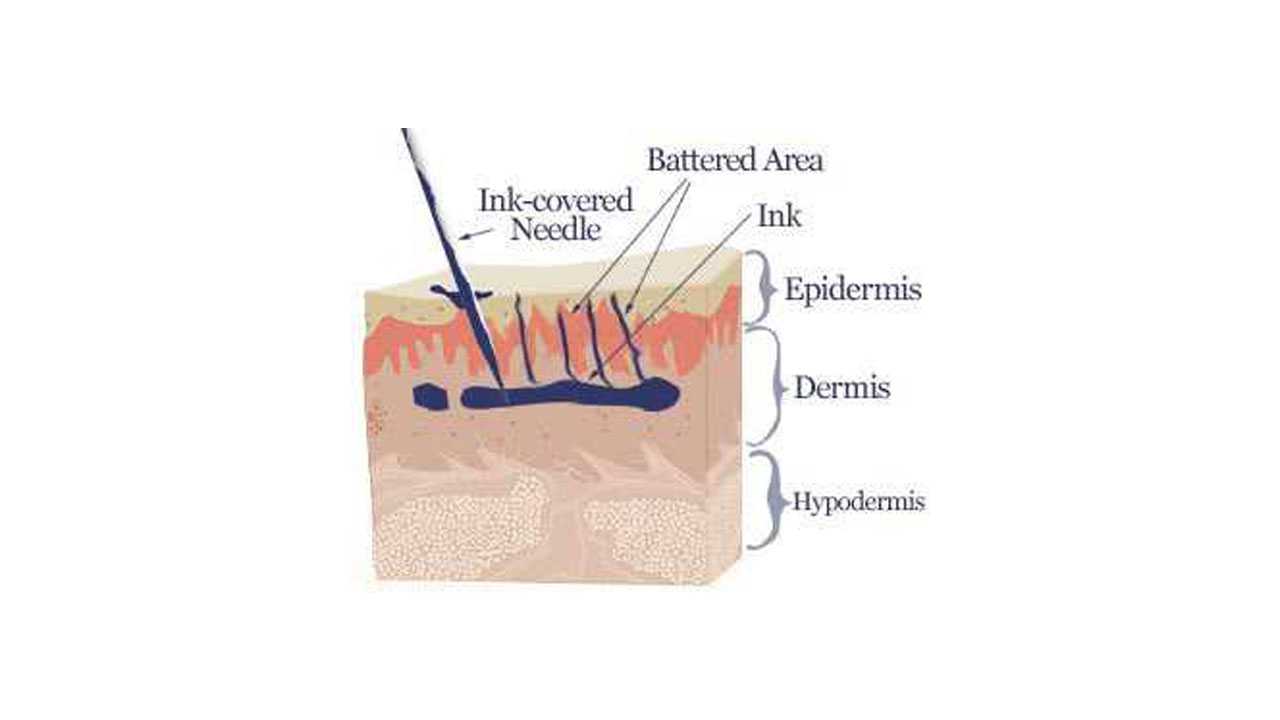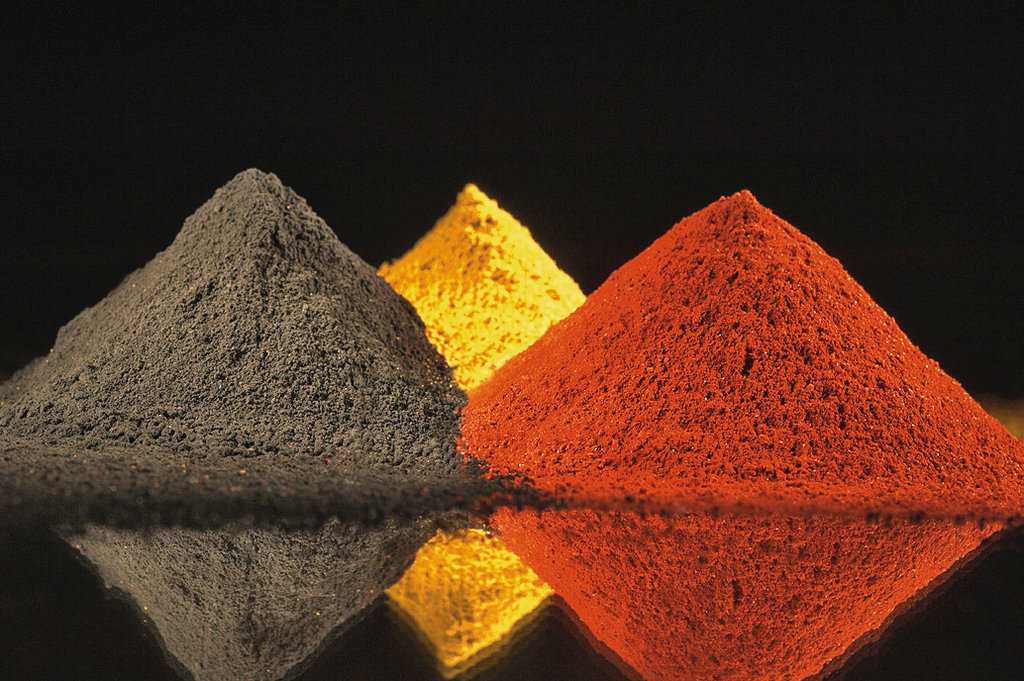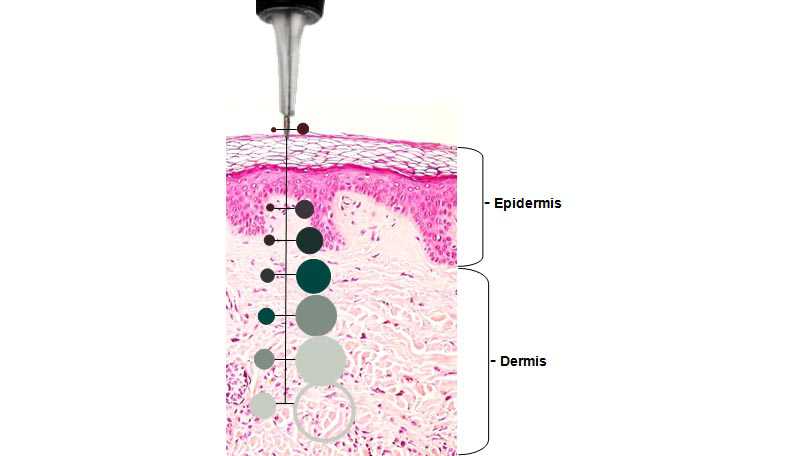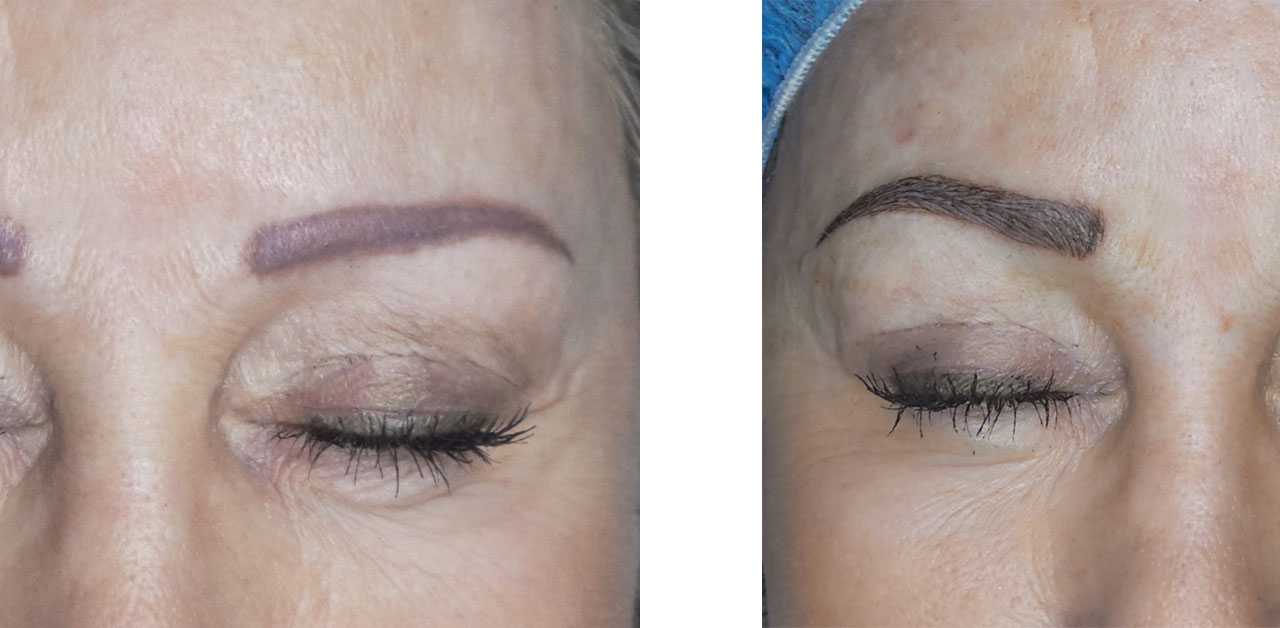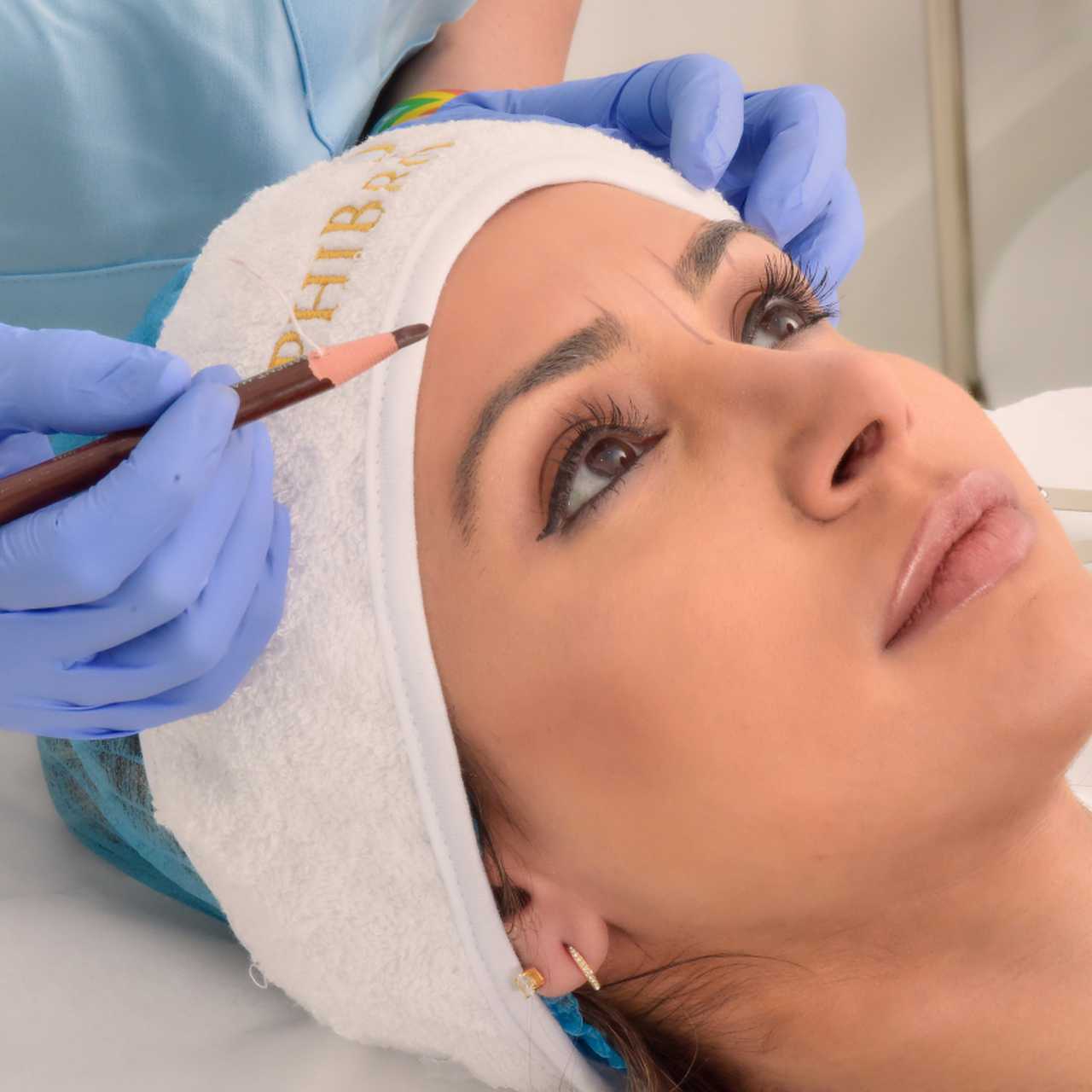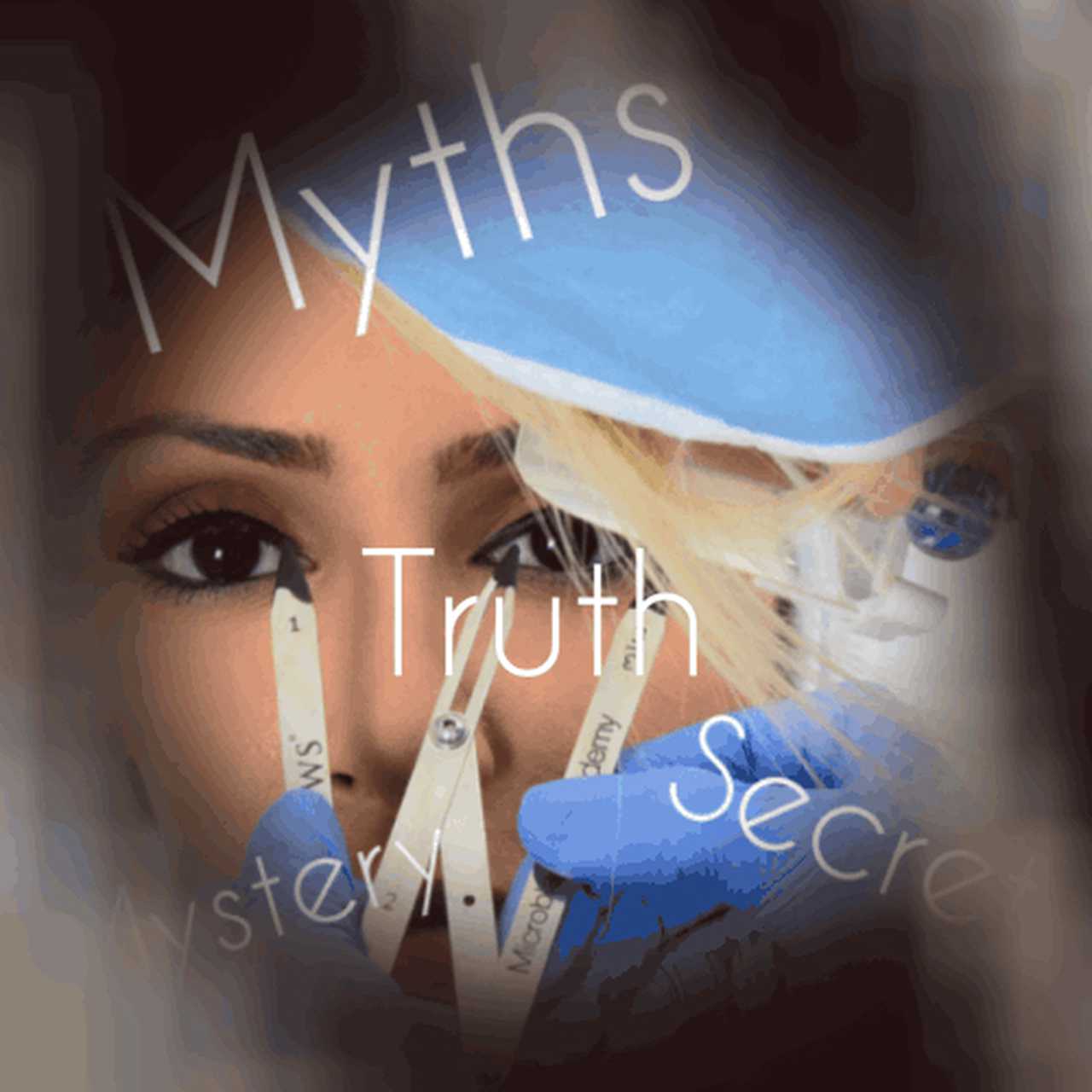The reasons why microblading hair strokes can change color and shade and how to prevent it.
I hear a lot of questions from my patients as well I see a lot of comments on Internet about why microblading fading is happening with time and what causes the permanent makeup to change color and how to prevent it.
Unfortunately there are a lot of myths, and misleading information out there. So I decided to put it all together in one article.
There are two major reasons for tattoo/permanent makeup fading and color change:
1. Type, quality and composition of the pigments used (we will look into it in the end of this article)
2. The complex process of the skin regeneration.
And in order to understand the latter, below is a brief extract about skin top layers structure and functions, taken from SEER training website (https://www.training.seer.cancer.gov)
"Layers of skin:
The Epidermis
The epidermis is the outermost layer of the skin, and protects the body from the environment. The thickness of the epidermis varies in different types of skin; it is only .05 mm thick on the eyelids, and is 1.5 mm thick on the palms and the soles of the feet. The epidermis contains the melanocytes (the cells in which melanoma develops), the Langerhans' cells (involved in the immune system in the skin), Merkel cells and sensory nerves. The epidermis layer itself is made up of five sublayers that work together to continually rebuild the surface of the skin:
The Basal Cell Layer
The basal layer is the innermost layer of the epidermis, and contains small round cells called basal cells. The basal cells continually divide, and new cells constantly push older ones up toward the surface of the skin, where they are eventually shed. The basal cell layer is also known as the stratum germinativum due to the fact that it is constantly germinating (producing) new cells.
Illustration of the layers of the skin
The basal cell layer contains cells called melanocytes. Melanocytes produce the skin coloring or pigment known as melanin, which gives skin its tan or brown color and helps protect the deeper layers of the skin from the harmful effects of the sun. Sun exposure causes melanocytes to increase production of melanin in order to protect the skin from damaging ultraviolet rays, producing a suntan. Patches of melanin in the skin cause birthmarks, freckles and age spots.
The Squamous Cell Layer
The squamous cell layer is located above the basal layer, and is also known as the stratum spinosum or "spiny layer" due to the fact that the cells are held together with spiny projections. Within this layer are the basal cells that have been pushed upward, however these maturing cells are now called squamous cells, or keratinocytes. Keratinocytes produce keratin, a tough, protective protein that makes up the majority of the structure of the skin, hair, and nails.
The squamous cell layer is the thickest layer of the epidermis, and is involved in the transfer of certain substances in and out of the body. The squamous cell layer also contains cells called Langerhans cells. These cells attach themselves to antigens that invade damaged skin and alert the immune system to their presence.
The Stratum Granulosum & the Stratum Lucidum
The keratinocytes from the squamous layer are then pushed up through two thin epidermal layers called the stratum granulosum and the stratum lucidum. As these cells move further towards the surface of the skin, they get bigger and flatter and adhere together, and then eventually become dehydrated and die. This process results in the cells fusing together into layers of tough, durable material, which continue to migrate up to the surface of the skin.
The Stratum Corneum
The stratum corneum is the outermost layer of the epidermis, and is made up of 10 to 30 thin layers of continually shedding, dead keratinocytes. The stratum corneum is also known as the "horny layer," because its cells are toughened like an animal's horn. As the outermost cells age and wear down, they are replaced by new layers of strong, long-wearing cells. The stratum corneum is sloughed off continually as new cells take its place, but this shedding process slows down with age. Complete cell turnover occurs every 28 to 30 days in young adults, while the same process takes 45 to 50 days in elderly adults.
The Dermis
The dermis is located beneath the epidermis and is the thickest of the three layers of the skin (1.5 to 4 mm thick), making up approximately 90 percent of the thickness of the skin. The main functions of the dermis are to regulate temperature and to supply the epidermis with nutrient-saturated blood. Much of the body's water supply is stored within the dermis. "
Pigment placement into skin during
What is happening when microblading artist places pigment into the skin? If it is done with micropigmentation or "PMU" machine, which uses needles to penetrate the epidermis, then the pigment is delivered into the upper dermis. i.e. under the melanin layer. The process damages the epidermis, and the top layer of the dermis (papillary layer) .The needle moves with the speed of 50-3000 times a minute, resulting in creating not so crispy and defined lines as in the correct microblading method. Machine micropigmentation is recommended when the "makeup" or powder effect is desirable.
The body starts to react immediately. Initial step is to stop bleeding, then to restore the wound closure. The cells responsible for immune reaction, i.e. fighting pigment particles, consider them as foreign intruders and begin to move into the area of penetration. Neutrophils arrive earlier and macrophages - later. Fibroblasts start rebuilding upper layer cells . The healing process starts.
It takes approximately 5-10 days for initial healing. During that period the skin can be irritated, turn red, itchy. So-called granulation tissue is being restored during that process. Later fibrous tissue is formed. Redness disappear. Usually it takes 3-5 weeks for the full healing.
What is happening with the pigment particles? Partially they are pushed back through the epidermis. The remaining are taken by fibroblast, macrophages, keratinocytes and mast cells and settled in the upper dermis layers under the restored granulation tissue. Some pigment particles are taken deeper into dermis, some are being taken to the lymph system and withdrawn from the body.
The ink that is used in microblading and micropigmentation consists of pigments (a composition of 3-4 powder substances of different color) and solvents: usually propylene glycol, glycerine or ethylene.
Pigments intended for the eyebrows (different shades of brown) are not just brown particles. It's a mixure of usually black, red and yellow pigments (sometimes, olive or light grey for blonde shades)
They can be non-organic (usually oxides of iron AKA iron oxides) or synthetic. Their molecules are different in size and structure and the body reaction to them can vary. Synthetic (often marketed as organic) can even create ties with the body proteins and travel to areas outside the skin. Iron oxides are neutral and safe but you will need to inform the doctor that you have done microblading or permanent makeup previously, when you planning an MRI scan since the magnetic fields in the very rare cases can induce the electric current in the iron atoms that causes the skin to irritatate and swell. It should be more a concern of the wider pigment areas, like traditional tattoo or lips, rather than eyebrows.
The phagocytic cells, recognize pigment particles as foreign bodies and try to move them to different layers of skin. Depending on where the color pigments being transferred to, result sometimes in eyebrows turning pinkish or bluish shades. The experienced artist with extensive knowledge of pigments, skin types and reaction can prevent it by choosing the correctly composed ink.
The Tyndall effect
The other major factor of color change, probably the most important one is so called Tyndall effect or "Tyndall scattering" named after the 19th century scientist John Tyndall. The light when goes through any colloid substance breaks down to different wavelength rays. The skin lets warmer red spectrum penetrate deeper than colder blue and UV lights. You can try to put the flashlight through the skin and see that it has orange/red color. That because of the Tyndall effect. Wilipedia
The deeper the pigment is in the skin the more blue it looks. With time pigment go deeper and deeper, so any type of tattoo or micropigmentation that is injected into the dermis will end up turning bluish.
On top of that in the beginning of this article, we described the layers on the epidermis, the lowest is melanin layer. Melanocytes react to the UV spectrum on the sunlight, causing sun tanning effect. So if pigment is in the dermis, it means it is under the melanin layer and the more those areas are exposed to the sun the bleaker and more bluish the pigment will look with time.
Here is how it looked on one of my patient's revision case before, and how I corrected it with Microblading without patient going through a lengthy and expensive laser tattoo removal series of treatment:
Microblading vs Old "PMU"
Microblading is the newest trend in permanent makeup industry. Unlike old "PMU" done with powerfull machines, it is done manually by the artist making hair looking micro cuts (strokes), with a special tool, called "pen". This tool has a set of 7-21 needles aligned together to create a blade shaped line. The artist soaks the pen into the ink, like a painter soaks the brush into the paint, then makes a cut into the highest level of the dermis (the basal layer). The process of drawing the hair one by one like that is very labor intensive and requires substantial experience and thorough knowledge of skin anatomy from the artist. After the Microblading procedure the pigment stays on much shallower levels than after older types of traditional tattoo or "PMU":
Patient's eyebrows before procedure
As in the processes we described earlier in the article, the skin cells responsible for regeneration and immune reaction try to push the pigment particles back to the surface rather then bringing them into the dermis. Initial skin reaction can be similar to older types of traditional tattoo or "PMU": redness, irritation, etc.
After approximately 4 weeks the skin is healed and usually 30-60% of pigment disappears. The hair stroke lines become slightly thicker and if you look very closely is slightly more blurry than right after the initial treatment. And usually around this time it is required to do a touch up treatment to refill the loss.
Eventually after 12-18 months, depending on the skin type, lifestyle activity, like suntanning, any activities causing sweat, like sports, sauna, and water related activity, alcohol consumption etc, the pigment disappears almost entirely. That's why the Microblading is also named "semi" permanent makeup. We cannot agree with this term since it is not completely semi-permanent. Some pigment particles can stay in the body permanently, but we agree that the visual effect will disappear after 12-18 months.
Microblading requires much more control from the artist. The pigment that placed not deep enough can vanish after a few weeks or even days. If the artist cuts into the skin too deep, reaching the hypodermis level with the blood vessels, then it can cause some minor bleeding. The skin cells will start their restoring functions in much more aggressive way, causing pigment disappearance and even small scars. The other effect when deeper dermis layers are penetrated is the wound restoration is happening at much larger intensity, bringing new cells to the skin surface and getting read of older dead skin cells at the much much higher volumes. That causing scabbing and flaking of. That in turn results in much higher loss of the injected pigment. Sometimes to the extent of complete newly applied hair strokes vanishing.
The inexperienced artists make this mistake often. The problem also is complicated by the fact that skin thickness is not the same. It depends on the persons skin type, and has different thickness in different areas. Even in the eyebrow, the skin gets thinner closer to the end of the arch. Only experienced and knowledgeable specialist is able to make precise cuts at the right depth.
The other important factor is the ink used should be originally intended for Microblading. The machine inks are thinnner, so that they can be delivered by the needles that are moving at a very high speed. If this type of ink is used in Microblading, chances are that the strokes will disappear much faster or even worse: blur into one another.
We tested various inks and pigments from many manufacturers, and came to the conclusion that the pigments from Swiss Color® (formulated in Switzerland and manufactured in Germany) best suits for Microblading. It's the best on the market as of today, and they don't break down into primary colors, like many other inks, it's made in complience with the strict European standards quality and sterile requirements.
Please note, that the US FDA doesn't approve tattoo or permanent makeup inks. Some Western European countries have certain regulation, and Germany is amongst the strictest ones. More on that you can find here.
By the way, FDA warns against eyebrow and eyelash tinting: "Don’t dye eyelashes and eyebrows. No color additives are approved by FDA for permanent dyeing or tinting of eyelashes and eyebrows. Permanent eyelash and eyebrow tints and dyes have been known to cause serious eye injuries."
By Ana Perrone,
Swiss Color® Academy International Microblading & PMU Instructor, Phibrows perfection and Biotek Artist.
Head Microblading specialist at Dr. Leonard Hochstein Clinic
Owner of Miami Beach Microblading, creator of Microblading App for Android and IOS.


